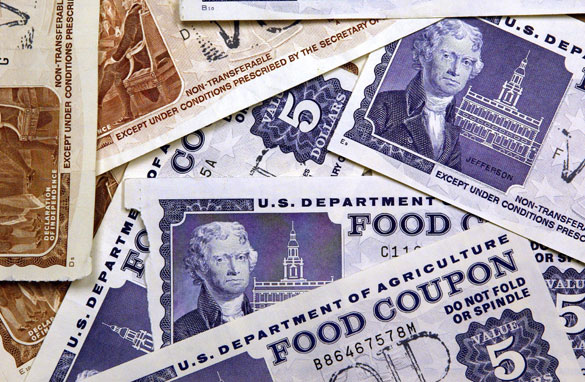
By Keyton Kosek, Special to MacIver News Service | December 14, 2012
[Madison, Wisc…] In late November, the U.S. Census Bureau released three briefs on public assistance and economic conditions in the United States for the years 2010 and 2011 using statistics from the American Community Survey. The briefs found that nationally, more people are living in shared households and more are relying on food stamps, though public assistance income is unchanged.According to the first brief, Poverty and Shared Households by State: 2011, many households in the past few years have gained an “additional adult” resident. “Additional adults” are classified as residents 18 or older who are not the householder or the head of the household’s spouse or domestic partner. The relationship of an “additional adult” can range from family members to friends.
More than half (53.2%) of “additional adults” in Wisconsin are children of the householder, and 21.8% are non-relatives. The data for the whole United States shows the number of shared households decreased from 2010 to 2011. Unfortunately, Wisconsin does not follow the national trend.
- In 2010, the United States had 22,204,411 shared households, which was 19.4%. The number declined in 2011 by 167,369 shared households to 22,037,042, or 19.2%.
- Wisconsin in 2010 had 309,648 shared households, which was 13.6%. The Badger state saw an increase of 7,549 shared households in 2011 for a 0.3% increase.
Without knowing for sure the reasons why Wisconsin’s number of shared households is increasing, one can speculate that since over half of the additional adults are the householder’s children, the economy and job market could be to blame. Kids moving back home with their parents after college graduation is unfortunately not out of the ordinary today because job prospects for current graduates are often hard to come by.
Studies have shown that over 50% of recent college graduates are either unemployed or underemployed.
The second brief, Food Stamp Supplemental Nutrition Assistance Program (SNAP) Receipt in the Past 12 Months for Households by State: 2010 and 2011, shows that both the U.S. and Wisconsin have an increasing number of people on food stamps. Between 2010 and 2011, 48 states (including Wisconsin) experienced an increase in food stamp recipients.
But the percent increase in Wisconsin is much higher than the national increase. Since 2010, recipients of food stamps and government aid rose 16% across the state, totaling 40,019 citizens. The national rise in percentage was 9.8%.
The third brief, Public Assistance Receipt in the Past 12 Months for Households: 2010 and 2011, shows that for the first time in several years, the percentage of American households receiving public assistance income has not increased significantly from the previous year (2010).
Public assistance income provides cash payments to poor families and does not include food stamps. In both 2010 and 2011, the United States was giving approximately 2.9% of households some sort of public assistance.
In Wisconsin, 2.2% of households were receiving benefits throughout both years. Wisconsin is one of 24 states with a lower participation rates than the U.S. average.
This is not to say that these 24 states are on their way to complete self-sufficiency, but if the rest of the country keeps heading in this direction and relying less and less on government assistance, it could have a positive effect on America’s economic recovery.